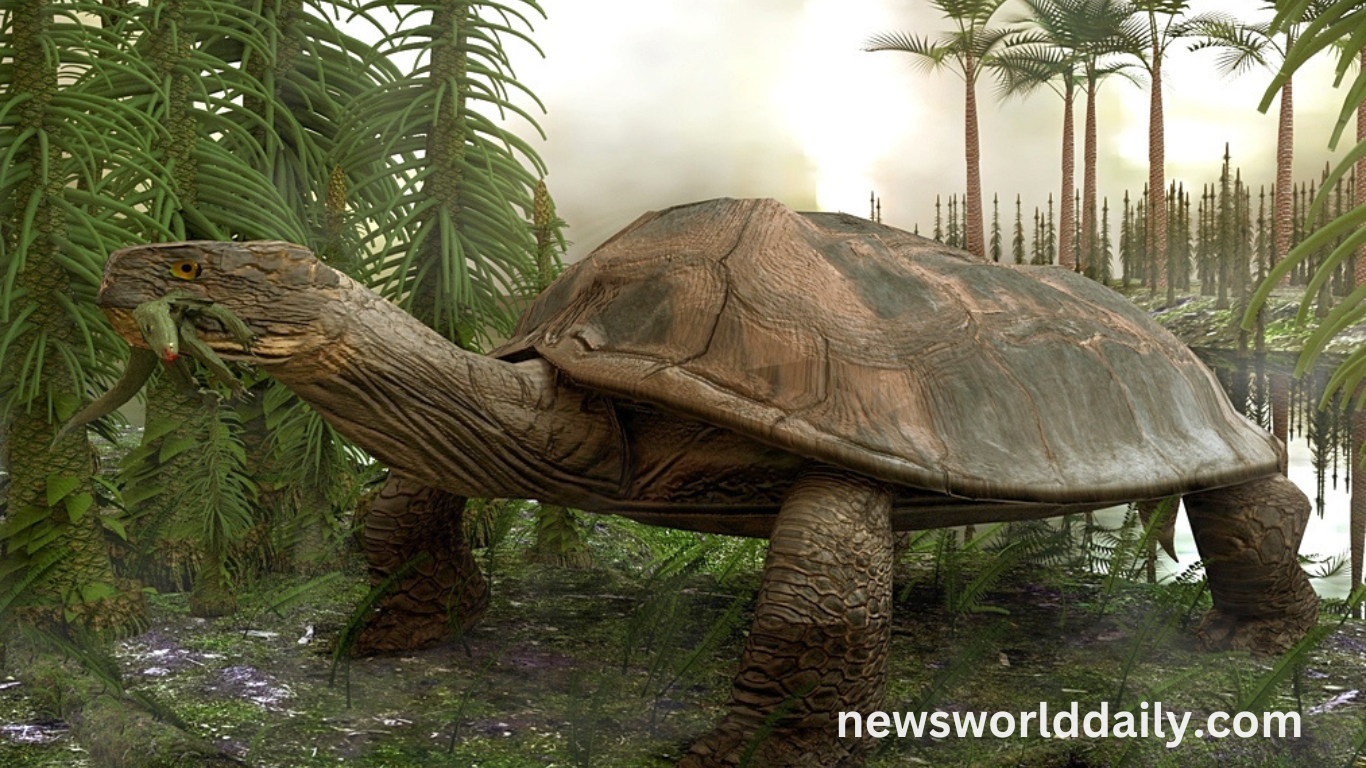When we think of dinosaurs, the massive, towering creatures that roamed the Earth millions of years ago often come to mind. However, among these giants, there were some creatures that also captured the imagination of paleontologists, such as ancient turtles. These turtles lived during the Mesozoic era, alongside the dinosaurs, and some grew to massive sizes. The world’s largest ancient turtles offer a glimpse into a time when reptiles ruled the Earth in more ways than one.
Archelon – The Giant of the Cretaceous Sea
Archelon is one of the most well-known giant ancient turtles. It lived approximately 70 million years ago during the late Cretaceous period. This massive sea turtle could grow up to 13 feet (4 meters) in length and weigh around 4,500 pounds (2,000 kg). Its shell was wide and domed, offering protection, while its flippers allowed it to glide effortlessly through the ancient oceans. Archelon’s size made it one of the largest sea turtles to ever exist.
Stupendemys – The Largest Freshwater Turtle
Stupendemys lived around 10 million years ago during the Miocene epoch, though it shares the same ancient reptilian heritage as the turtles of the Mesozoic. This freshwater turtle, found in what is now South America, was a giant of its kind. Its shell reached an extraordinary 10 feet (3 meters) across. Stupendemys had a powerful, beak-like mouth that helped it dominate the freshwater habitats of its time. This colossal turtle is often regarded as one of the largest freshwater turtles in history.
Psephophorus – The Behemoth of the Waterways
Psephophorus, another giant turtle from the Cretaceous period, was closely related to Archelon. Found in what is now North America, this massive turtle could grow up to 10 feet in length and had a similarly large, broad shell. While Archelon dominated the oceans, Psephophorus thrived in the shallow inland seas that existed during the time of the dinosaurs. Despite its size, it likely had a slow, lumbering nature, making it an easy target for predators but hard to miss due to its enormous presence.
Read More : Why Are Fossils Only Found in Sedimentary Rocks?
Protostega – An Early Oceanic Giant
Protostega is another turtle that lived during the Cretaceous period and shared the oceans with Archelon. While smaller than Archelon, Protostega could still reach lengths of about 10 feet. Its relatively more streamlined shell suggests it was an excellent swimmer, navigating through the ancient seas with ease. As a part of the superfamily Chelonioidea, Protostega was an essential part of marine ecosystems, feeding on jellyfish and small fish.
Carbonemys – The Land and Water Giant
Carbonemys was a massive turtle that lived around 60 million years ago during the Paleocene. It was one of the largest land turtles ever discovered. With a shell that could reach 10 feet across, Carbonemys would have been an imposing figure in its environment. Unlike other giant turtles, Carbonemys lived in both land and water environments. Fossils suggest that it was a versatile creature, capable of moving across both land and aquatic habitats, and likely preyed on smaller animals.
Frequently Asked Questions
What is the largest ancient turtle ever discovered?
The largest ancient turtle is Archelon, which reached lengths of 13 feet and weighed up to 4,500 pounds.
When did the giant ancient turtles live?
Most giant ancient turtles, such as Archelon, lived during the Mesozoic Era, specifically the Cretaceous period, around 70 million years ago.
Did giant turtles coexist with dinosaurs?
Yes, many giant turtles lived during the time of the dinosaurs, particularly the Cretaceous period, sharing ecosystems with various dinosaur species.
What was the diet of ancient giant turtles?
Ancient giant turtles were primarily herbivores or omnivores, feeding on sea plants, small fish, and aquatic invertebrates, depending on their environment.
Were there any freshwater giant turtles?
Yes, Stupendemys, a giant freshwater turtle, lived in South America about 10 million years ago, and its shell could reach 10 feet across.
How did these giant turtles protect themselves?
Like modern turtles, these ancient giants had hard, domed shells that offered protection from predators and environmental hazards.
What caused the extinction of these giant turtles?
Many of these giant turtles went extinct due to climate changes, changes in sea levels, and predation pressures. Some were also outcompeted by other species.
Are any of these ancient turtles related to modern turtles?
Yes, ancient turtles like Archelon and Protostega are part of the same family as modern sea turtles, though they were much larger and evolved differently.
Conclusion
The giant ancient turtles that lived alongside the dinosaurs were remarkable creatures. From Archelon’s massive oceanic form to the freshwater dominance of Stupendemys, these turtles showcased the variety and adaptability of reptilian life in prehistoric times. While most of these giants are now extinct, their fossils continue to captivate scientists and provide crucial insights into the ancient world, helping us understand how life evolved in the Mesozoic Era.









